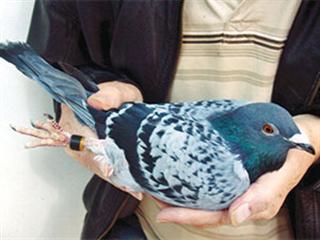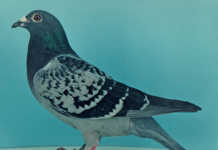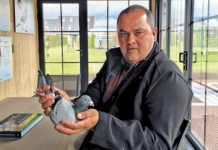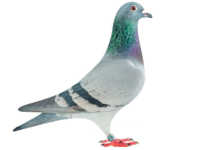
In a One-Day Racing Pigeon Loft, newly weaned pigeons are homed and trained from a communal loft on behalf of the entrants. A description of One-Day Loft racing featured in last week’s issue (2 July 2010). Although this system has many advantages, there are downsides too, which are discussed this week.
Birds suffer for profit
One of the advantages is that it allows for armchair racing. You don’t have to have your own loft to enter races and you can win some serious money.
There are passionate fanciers who support One-Day Lofts without winning anything, but there are also fanciers who merely see pigeons as money-making machines. They don’t care about the birds, or the conditions in which they’re raised. Their eyes are firmly on the prize.
When it’s the loft owner who’s only after the money, winners and breeders are at risk of not getting paid what they’re owed.
You also get inexperienced non- fanciers, who participate in a One-Day Loft in an attempt to make a fast buck.Of course, it’s not surprising that in all these cases, the birds suffer.

The racing pigeon far right, lost its toe during training procedures.
Health hazards
One-Day Lofts are sometimes blamed for the spread of diseases in the pigeon fraternity. Many fanciers don’t buy One-Day Loft pigeons for fear of introducing illness into their home lofts.
But One-Day Lofts also have to deal with sick pigeons sent in by fanciers guilty of neglect in their home lofts. All too often the disease has started to spread before the symptoms are visible in the infected bird.
I had a bad experience with a One-Day Loft after finding two pigeons seriously ill with paramyxo disease among the main entrants for a race. On another occasion, when I dewormed a pigeon after buying it at a One-Day Loft auction, it shed a handful of worms – it had worms when sent to the final race.
All One-Day pigeon lofts should have access to a vet who’s an expert on pigeon diseases. Weekly health examinations, including blood-samples, crop smears and stool analysis, should be conducted and a report submitted to the entrants and the South African National Pigeon Organisation.
One-Day Loft managers who go the extra mile for the health of the pigeons in their care, will reap the rewards. As will their clients.
Poor support, losses and theft
Even the best-run One-Day Loft can experience problems beyond its control that put the enterprise in jeopardy. These include:
Poor support. Depending on its prize pay-out budget, an average-sized One-Day Loft needs at least 400 pigeons to cover running expenses. Often a One-Day Loft must finance pay-outs from its own pocket in its first year to build up a trustworthy reputation.
Pigeon losses. On average, most One-Day Lofts lose around 40% of the original pigeons before the final race. But over 50% of the remaining 60% sent to the final race will often not return. That means a total loss of 70%. My calculation is that around 60 000 pigeons have been lost in One-Day Lofts in South Africa over the past 10 years.
Theft of strays. Undoubtedly, some of those missing pigeons were stolen. After the completion of more than one One-Day Loft, “entrepreneurs” have been spotted selling tired, late-coming pigeons at the side of the road. These losses will affect the One-Day Loft’s success.
I’ve merely discussed some of the things that can go wrong in a One-Day Loft. Not all lofts are run by money-grabbing individuals who care little about the birds – most are extremely well-managed.
Having said this, though, I do feel that we need a team of specialists to monitor One-Day Lofts to clamp down on bad practices and prevent the spread of disease.
Contact Thomas Smit on 011 680 4778 or e-mail [email protected].











